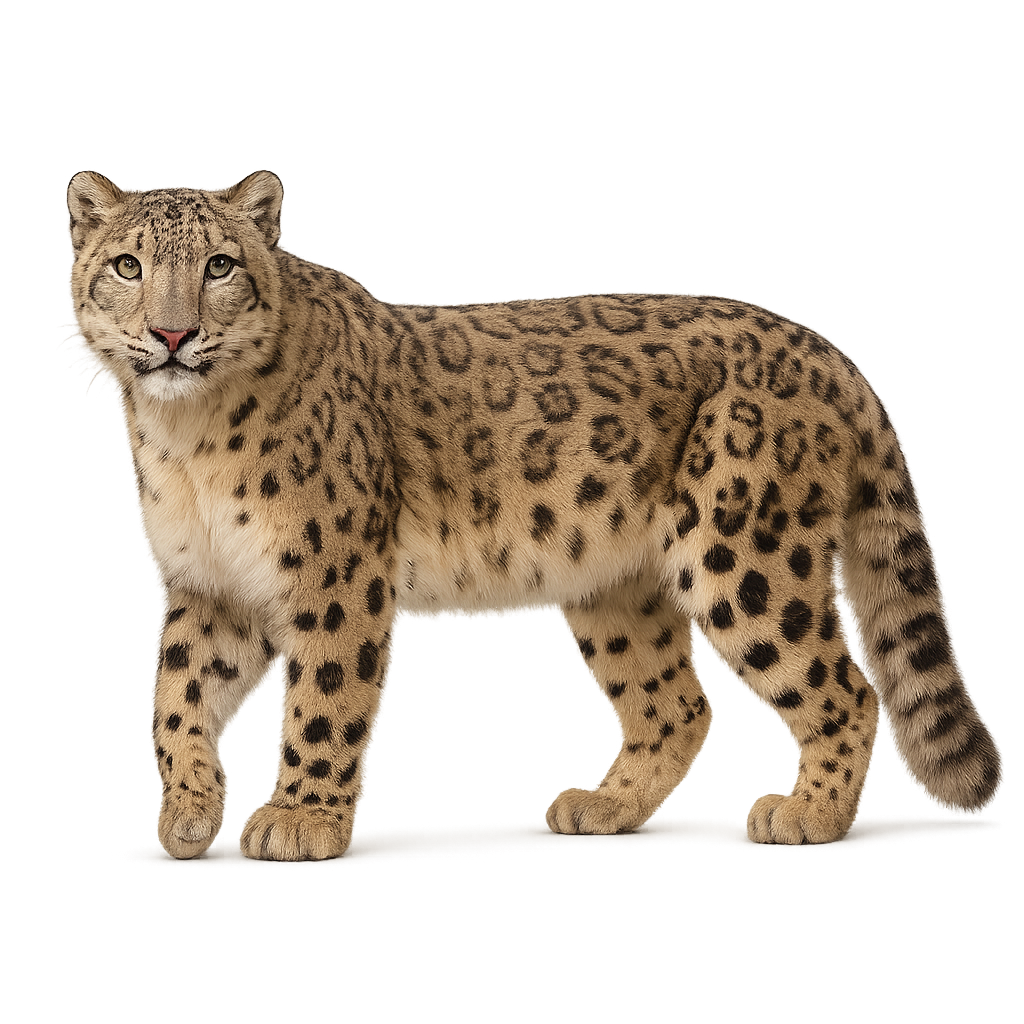Observe and photograph a species in its natural habitat
Learn where and when to observe a species in the wild, how to recognize it in the field, and what habitats it lives in. Get photography tips adapted to its behavior and capture stunning images without disturbing the animal. For full details, open the complete profile in the WildlifePhotographer app.
Snow Leopard
Scientific name: Panthera uncia

IUCN Status: Vulnerable
Family: FELIDAE
Group: Mammals
Shyness: Very shy
Safe distance: 60 m
Breeding season / Courtship: 15.02-15.04
Gestation: 3 mois
Births: 15.05-15.07
Habitat:
High-altitude rocky areas and cold steppes
Description:
The Snow Leopard, also known as the ounce, is a large cat primarily found in the mountains of the Himalayas, Tibet, Central Asia, and the Pamir Mountains. It measures between 1.1 and 1.3 meters in length, with a tail of 80 to 100 cm, and weighs between 27 and 55 kg. Its thick, dense fur, which is light gray to white with dark rosettes, allows it to blend perfectly into its snowy environment. The Snow Leopard is a solitary carnivore, primarily feeding on wild goats, sheep, small deer, and sometimes small mammals. It is an excellent climber and stealthy hunter, capable of pouncing on its prey from high ground. Unfortunately, this species is threatened by illegal hunting, poaching, and habitat loss. It is currently listed as "vulnerable" by the IUCN.
Recommended lens:
>=300 mm
Photography tips:
Approach slowly and discreetly, using a telephoto lens, as the snow leopard is a solitary, secretive animal and difficult to spot in the mountains.
Photograph early in the morning or late in the afternoon, when the light is soft and the snow leopard is more active, often foraging for food or moving through rugged terrain.
Capture moments of natural behavior: The snow leopard primarily hunts small mammals, birds, and occasionally ungulates. Wait for moments when it is moving or resting in its mountainous environment.
Be patient and respectful: The snow leopard can spend a lot of time silently moving through the mountains. Stay at a respectful distance and wait for moments when it is more visible without disturbing its activity.
The snow leopard is a vulnerable species due to habitat loss, poaching, and climate change. It is essential to respect its natural environment, especially in cold and isolated mountainous regions. Follow local conservation rules to preserve this rare and majestic species.
Ready to take action?
Choose your platform and start your free trial today



